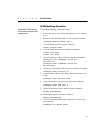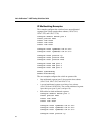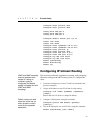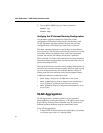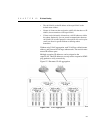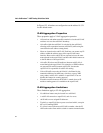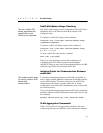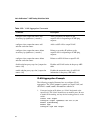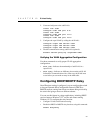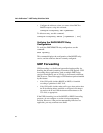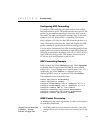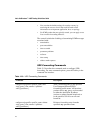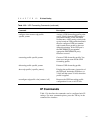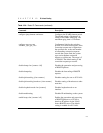
C H A P T E R 12 IP Unicast Routing
207
2. Create and add ports to the subVLANs:
create vlan vsub1
configure vsub1 add port 8-10
create vlan vsub2
configure vsub2 add port 11-13
create vlan vsub3
configure vsub3 add port 15-16
3. Configure the superVLAN by adding the subVLANs:
configure vsuper add subvlan vsub1
configure vsuper add subvlan vsub2
configure vsuper add subvlan vsub3
4. Disable communication among subVLANs (optional):
disable subvlan-proxy-arp <superVLAN name>
Verifying the VLAN Aggregation Configuration
Use these commands to verify proper VLAN aggregation
configuration:
• show vlan—Indicates the membership of subVLANs in a
superVLAN.
•
show iparp—Indicates an ARP entry that contains subVLAN
information. Communication with a client on a subVLAN must
occur before you can make an entry in the ARP table.
Configuring DHCP/BOOTP Relay
Once IP unicast routing is configured, you can configure the switch
to forward Dynamic Host Configuration Protocol (DHCP) or
BOOTP requests coming from clients on subnets being serviced by
the switch and going to hosts on different subnets.
You can use this feature in various applications, including DHCP
services between Windows
§
NT
§
servers and clients running
Windows 95. To configure the relay function:
• Configure VLANs and IP unicast routing.
• Enable the DHCP or BOOTP relay function, using this command:
enable bootprelay



